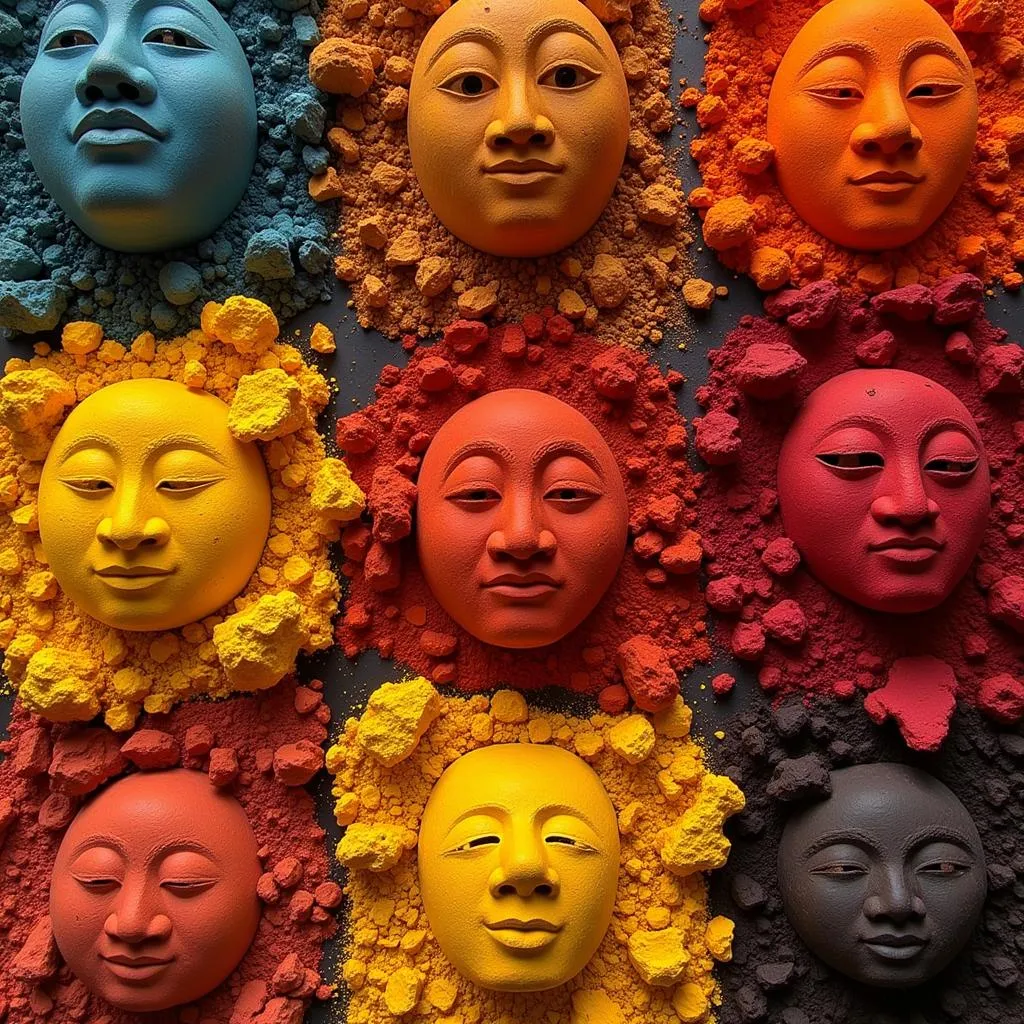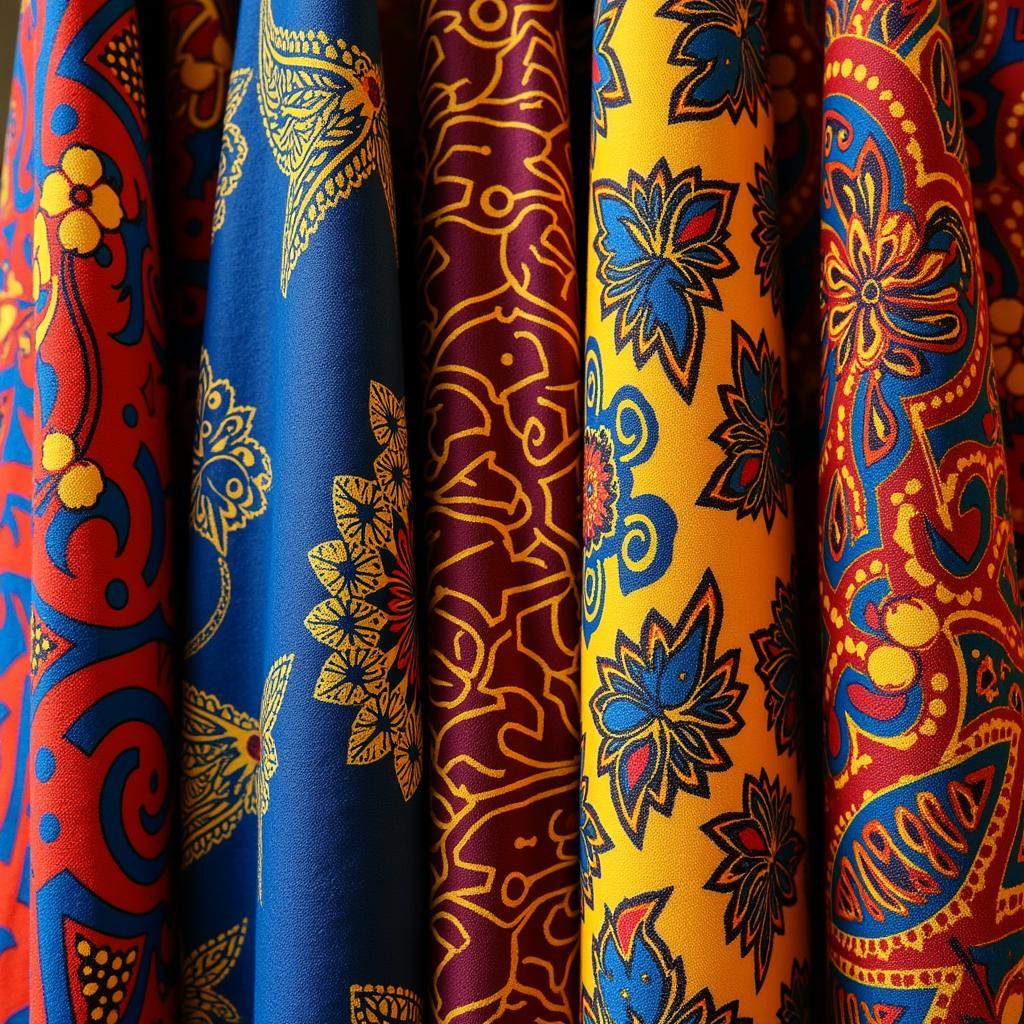Discover the Rich History and Culture of African Ochre
Ochre, a natural pigment found in various parts of Africa, has played a significant role in the continent’s history, art, and cultural practices. From prehistoric cave paintings to modern-day ceremonies and rituals, ochre has been a constant presence, shaping the narratives of African communities. This article delves into the fascinating world of African ochre, exploring its diverse uses, symbolism, and cultural significance.
The History of African Ochre
Ochre, a natural pigment composed of iron oxides, has been used by humans for millennia. In Africa, evidence suggests that ochre has been used for at least 70,000 years, with the earliest known uses found in cave paintings in South Africa. These paintings depict animals, humans, and abstract patterns, offering a glimpse into the beliefs and practices of early African societies.
The use of ochre spread throughout the continent, becoming an integral part of various African cultures. Archaeologists have discovered ochre in ancient burial sites, suggesting its use in rituals and ceremonies related to death and the afterlife. Ochre was also incorporated into tools, weapons, and other objects, reflecting its practical and symbolic importance.
The Symbolic Meanings of African Ochre
Ochre’s color, ranging from yellow to red, holds deep symbolic meaning in African cultures. Yellow ochre, often associated with the sun, represents life, energy, and fertility. It is frequently used in ceremonies celebrating birth, harvests, and other joyous occasions.
Red ochre, on the other hand, is often connected with blood, fire, and the earth. It symbolizes power, strength, and protection. In many African cultures, red ochre is used in rituals and ceremonies related to war, hunting, and ancestral spirits. It is also used to mark sacred spaces and to protect individuals from evil forces.
The Artistic Uses of African Ochre
African ochre has been a fundamental element in the continent’s rich artistic tradition. From cave paintings to contemporary art, ochre has been used to create vibrant and expressive works.
“Ochre is the artist’s palette, allowing them to capture the essence of life and connect with the ancient spirits of the earth,” says renowned art historian Dr. Amina Mwakilongo.
Examples of ochre’s artistic uses:
- Rock Art: Ochre was used extensively in rock art throughout Africa, particularly in South Africa, Namibia, and Algeria. These paintings, some dating back thousands of years, depict animals, humans, and spiritual figures, providing valuable insights into the beliefs and practices of early African societies.
- Body Painting: Ochre is still widely used in body painting ceremonies in many African cultures. It serves various purposes, including marking social status, celebrating rituals, and protecting individuals from harm.
- Masks and Sculpture: Ochre is often incorporated into masks and sculptures, adding color and symbolic meaning. It is used to highlight features, to depict specific emotions, and to connect the artwork with the spiritual world.
The Cultural Significance of African Ochre
Ochre’s cultural significance extends beyond art and ritual. It is used in traditional medicine, cosmetics, and even in the construction of homes. In some cultures, ochre is believed to have healing properties and is used to treat various ailments.
“Ochre is more than just a pigment; it is a symbol of our heritage and our connection to the land,” states Dr. Mwakilongo.
Ochre’s diverse cultural uses include:
- Traditional Medicine: In some cultures, ochre is used to treat skin conditions, wounds, and other ailments. It is also used to create protective amulets and charms.
- Cosmetics: Ochre is often used to create body paint, eyeshadow, and other cosmetics. It is believed to enhance beauty and to protect individuals from evil spirits.
- Construction: In some regions, ochre is mixed with clay to create durable building materials. It is also used to create decorative patterns on walls and other structures.
The Future of African Ochre
Despite the rise of modern pigments, ochre remains an essential element in many African cultures. It is a symbol of heritage, tradition, and a connection to the land.
As the world becomes increasingly aware of the importance of sustainable practices, there is a growing interest in natural pigments like ochre. Artists and craftspeople are exploring new ways to use ochre, blending tradition with modern techniques to create unique and innovative works.
Conclusion
African ochre is more than just a pigment; it is a powerful symbol of history, culture, and spirituality. It has played a vital role in shaping the narratives of African communities for millennia, and its significance continues to resonate today. As we learn more about the diverse uses of ochre in Africa, we gain a deeper understanding of the continent’s rich and vibrant heritage.
 African Ochre: A Symbol of Rich Artistic Tradition
African Ochre: A Symbol of Rich Artistic Tradition
FAQs
- What are some popular ochre mines in Africa? Some popular ochre mines in Africa include the Kalahari Desert in South Africa, the Atlas Mountains in Morocco, and the Sahara Desert in Algeria.
- What are some examples of African art using ochre? The San rock paintings in South Africa, the Dogon masks in Mali, and the Yoruba sculptures in Nigeria are all renowned examples of African art that uses ochre.
- How is ochre used in traditional medicine? Ochre is used in traditional medicine to treat skin conditions, wounds, and other ailments. It is also used to create protective amulets and charms.
- How is ochre used in contemporary art? Contemporary artists are using ochre in a variety of ways, including in painting, sculpture, and installation art. They are experimenting with new techniques and materials to explore the unique qualities of ochre.
- What are the environmental considerations for extracting ochre? It is important to extract ochre sustainably to avoid damaging the environment. This includes ensuring that extraction practices are environmentally friendly and that mining areas are properly restored.


